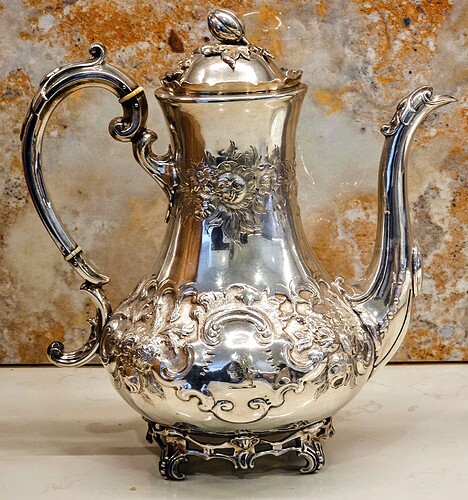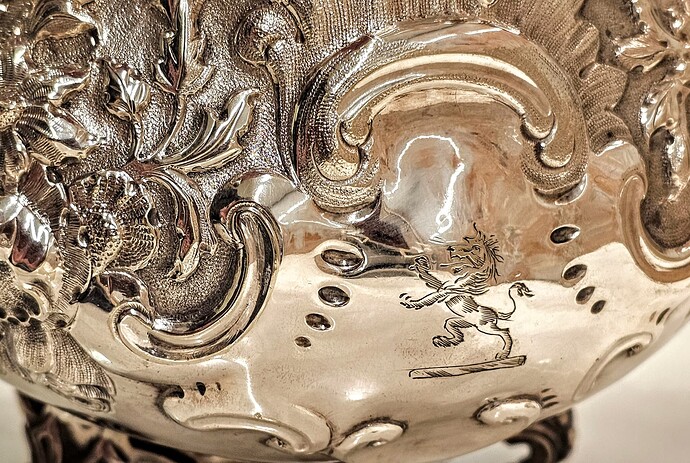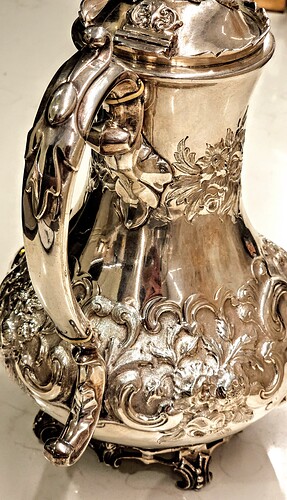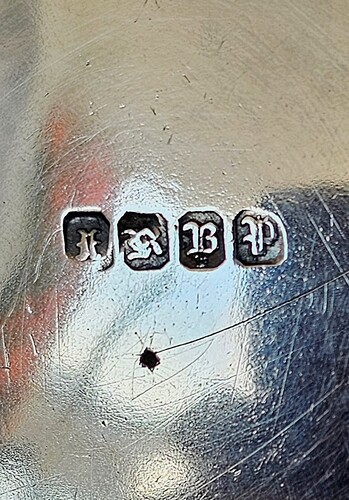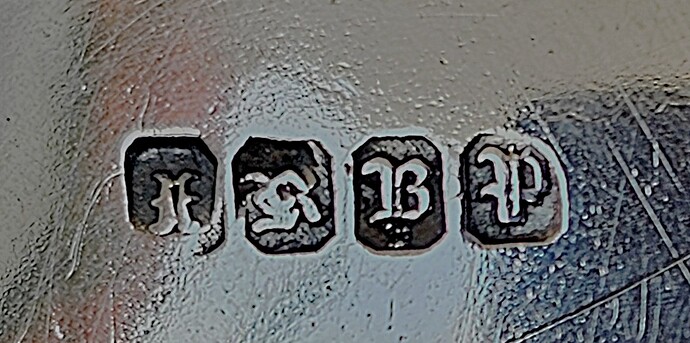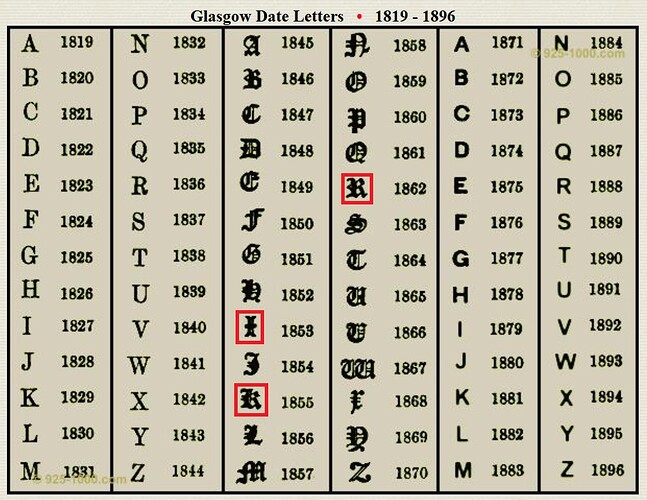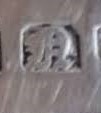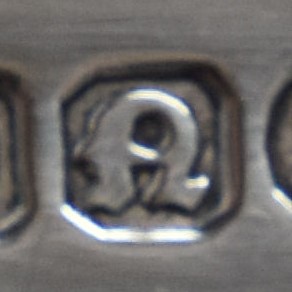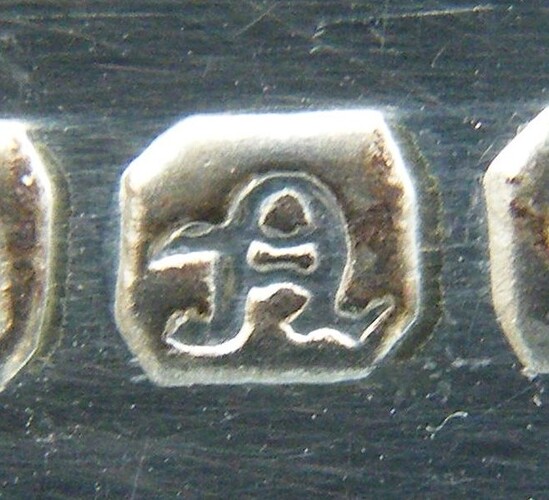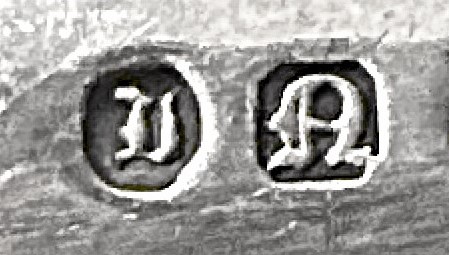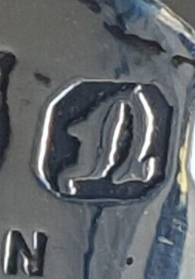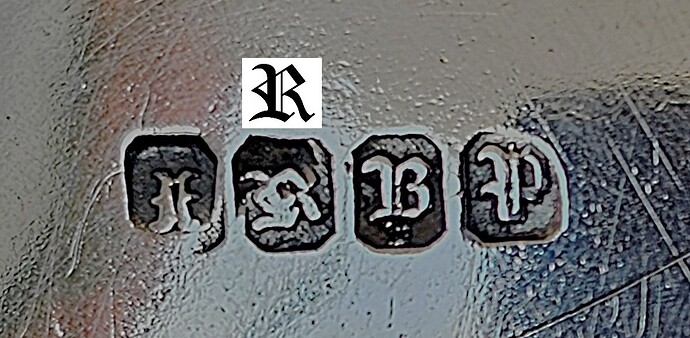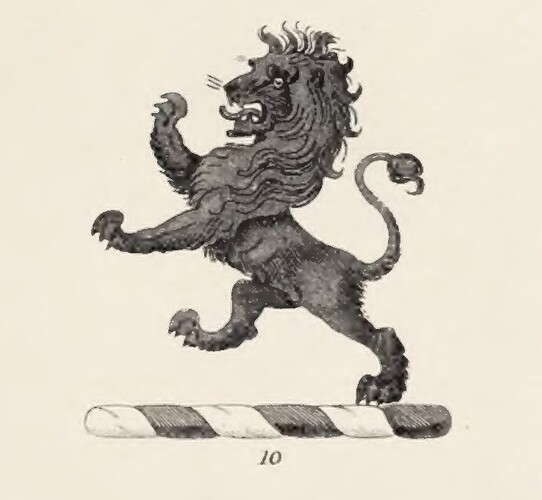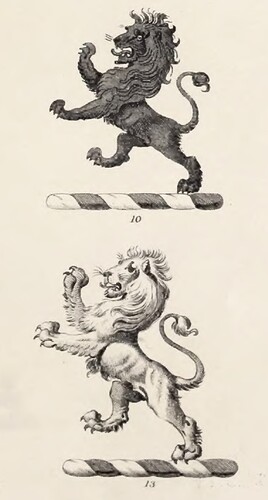The answer to your headline question is, no, not so far. The answer to your text question as to accurate date, again no, but probably third quarter of 19th century based on best evidence to date.
With the development of electroplating with silver in 1846, Britannia metal was frequently employed as the base metal for silver-plated household goods and cutlery. The abbreviation EPBM on such items denotes “electroplated Britannia metal”.
Britannia metal, aka nickel silver was generally used as a cheaper alternative to electroplated nickel silver or EPNS, which is more durable. Your abbreviation INBM appears to be a single composite rather than the combination of two ideas, a maker IN and a metal content BM. But what appears and what is when it comes to gothic lettering designed specifically to beguile the casual Victorian observer/buyer is very often very different.
Which is why one might plumb for a date sometime in the latter part of the 19th century, probably the last quarter.
You could do a composite test for nickel silver which would go a long way to answering the question as to what BM stands for.
Because this is an unregistered trademark not a registered mark, other than private websites, which have already been competently scoured by your good self and two very able researchers, and some rather haphazard printed lists, there is nowhere to look up plate marks.
I take it everybody is presuming this is British and probably Hallamshire because of the British Lion rampart which would be a badge for the buyer probably pre stamped rather than custom inscribed? This is likely an accurate assumption.
If, Phil, www.silvermakersmark.co.uk is right, and he usually is, and the first two letters are for John Nowill, a cutler first established by the grant of a D trademark in Hallamshire about 1700, then that company’s records will show your mark (It was indeed involved in plate manufacture although mostly as it pertained to its core business cutlery.)
On the subject of slightly deceptive marks, in 1850 Nowill was charged with infringing trademark by selling knives marked ‘J. Rodgers & Sons’. Nowill’s defence would have to have been that counterfeiting trademarks was relatively common in the nineteenth century. Never a good defence in the criminal courts and apparently no more useful defending a trade mark infringement application. The company settled out of court.
Jack Adams Ltd of Sheffield was the last recorded recipient of Nowill’s records and he has passed on.
But his executors may be able to help.
CRWW
